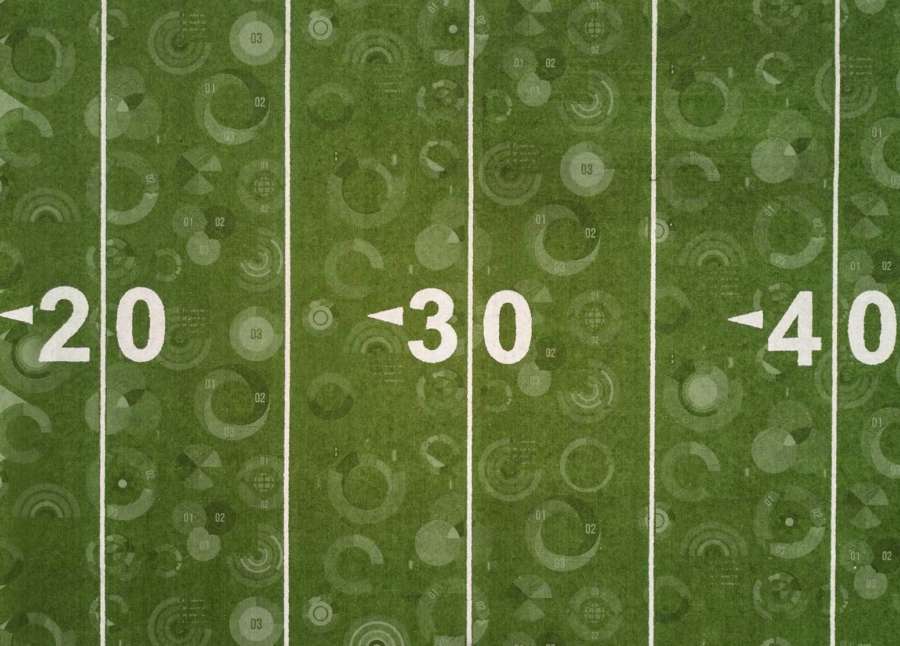How awful was your fantasy football season? Was it like mine? Did you steal trusted veterans and nab a few promising sleepers only to see nine (nine!) of your top-shelf starters head to Injured Reserve at some point during the regular season?The 2017 fantasy football season was a virtual train wreck of season-ending injuries, multi-game suspensions, and random benchings of starting quarterbacks. To further complicate matters, we’ve reached peak fantasy football. Once the guilty obsession of just a handful of stat nerds, fantasy has reached levels of NCAA March Madness bracket hysteria.

With daily fantasy now in the mainstream and traditional fantasy just a popular as ever, the result has been a firehose of statistical information to help you manage your team.I need all kinds of stats. I play leagues with one and two QBs, individual defensive players, varying point allotments for receptions and pick-sixes, even points for home games and head coaches.The good news is that all sorts of advanced metrics are available to me now, from the stats we’ve become familiar with like Yards per Target (YPT) and Quarterback Rating (QBR), to the ones I might be introducing you to in this sentence, like Adjusted Net Yards per Attempt (A/NYPA) and Receptions per Route Run (RPRR).
I’m not going to explain these new stats. There are sites that do that better and, frankly, I’ve spent too much of my time adjusting for MIMLBHIR (Minutes In My Lineup Before Hitting Injured Reserve) to worry about the finer metrics.
The rules of the NFL game are changing too, glacially compared to how fast we’re seeing new metrics and new fantasy players come online, but changing in important ways nonetheless.
For the last several years, the NFL has shifted from a run-first to a pass-first league, and lately those passes are trending to be more frequent over shorter distances. Even the advent of regular Thursday night games impacts player performance and injuries. And those injuries. Whether they’re occurring more often and are more gruesome or if it’s just a matter of an increased awareness of how serious those injuries are, the 2017 campaign has decimated the crop of sure-thing stars at prominent fantasy positions.
So more fantasy players, more rules, more options, more stats. All this leads to a lot of noisy data coming at you from all angles.
The thing is, like most fantasy players, I’ve stopped caring about how changes in the data impact the football world. I can’t keep up with that sort of thing, because I’m juggling with way too many changes making way too many impacts to way too many of my own fantasy teams.

Yahoo! Fantasy Football recap generated by Automated Insights’ NLG platform.
NLG can help me with this. It can break down advice and recommendations for each of my teams, based on the rules of my own league and the pool of starter options and replacement players available to me. I don’t have to worry about players I can’t have, moves I can’t make, or whether or not someone’s projections take into account oddities in my league’s scoring system.
Back in the 2000s, I needed to know a little about a lot. It’s much, much easier and more powerful to spend that same time learning a lot about a little.
This, in a nerdy sporty fantasy nutshell, is a microcosm of the impact of the Internet on our lives and livelihoods.
I don’t make my living off of fantasy football (other than the fantasy football recaps and previews my team creates for both Yahoo and NFL.com). There are, however, two similar areas where the Internet has noised up the data that does indeed have a very substantial impact on my life, and likely on yours as well.
Finance and Business Intelligence.
I first started taking the reigns of my own personal investing back in late 2000s, when the Great Recession had sunk in and investing seemed kind of simple. You bought a stock, you hoped the company survived, you made some money.
Much like fantasy football in the 2000s, the macro was the thing. You had great quarterbacks, average quarterbacks, and emergency quarterbacks, and all you had to do was watch the games, read the sports page (online, of course), and pick through some box scores or maybe drop $20 on a weekly ranking service from some expert who would crunch all the available data, by hand, for you.
In investing, I learned what I needed from reading articles on Yahoo or Motley, watching CNBC after work some days, and using some awesome desktop software that would slice and dice stock data in ways that, well frankly ways I still don’t understand very well, but it made for some really awesome looking charts.
In the same vein, I ran my first business with a heady mix of Quickbooks, Salesforce, and a homegrown database. I succeeded because my BI was built into that database, and I could write whatever SQL I wanted to get the information I needed. It just took me a couple hours every week to do the analysis.
Those were the days.
Succeeding with information gleaned only from the macro is impossible today. Well, I mean, it’s possible, but you’re working with very little, very late. The closer you can be to your own personalized data analysis, automatically cranking out advice and recommendations in a format that’s easy to understand, like plain-English, short-burst narrative, the more time you can spend acting on that information instead of trying to understand it.
Micro over macro, that’s how you defend yourself against data overload.
In fantasy football, I can spend less time reading about every injury to every team and how it impacts every game every week. I can spend more time making trades and coming up with new, ever-more-hilarious smack talk.
In finance, I no longer have to worry about foreign currencies and the market for futures for frozen concentrated orange juice. I can spend my time digging down into research, trading, and generally not being a financial analyst.
In business intelligence, I can stop writing more and more complex SQL against a database that really only tells me how I’m doing against past versions of my own company. I can create countless scenarios and strategies based on short reads constructed from my own marketing, sales, production, and operations data.
NLG is the competitive advantage in all of those cases, creating signal from noise so I don’t have to.


